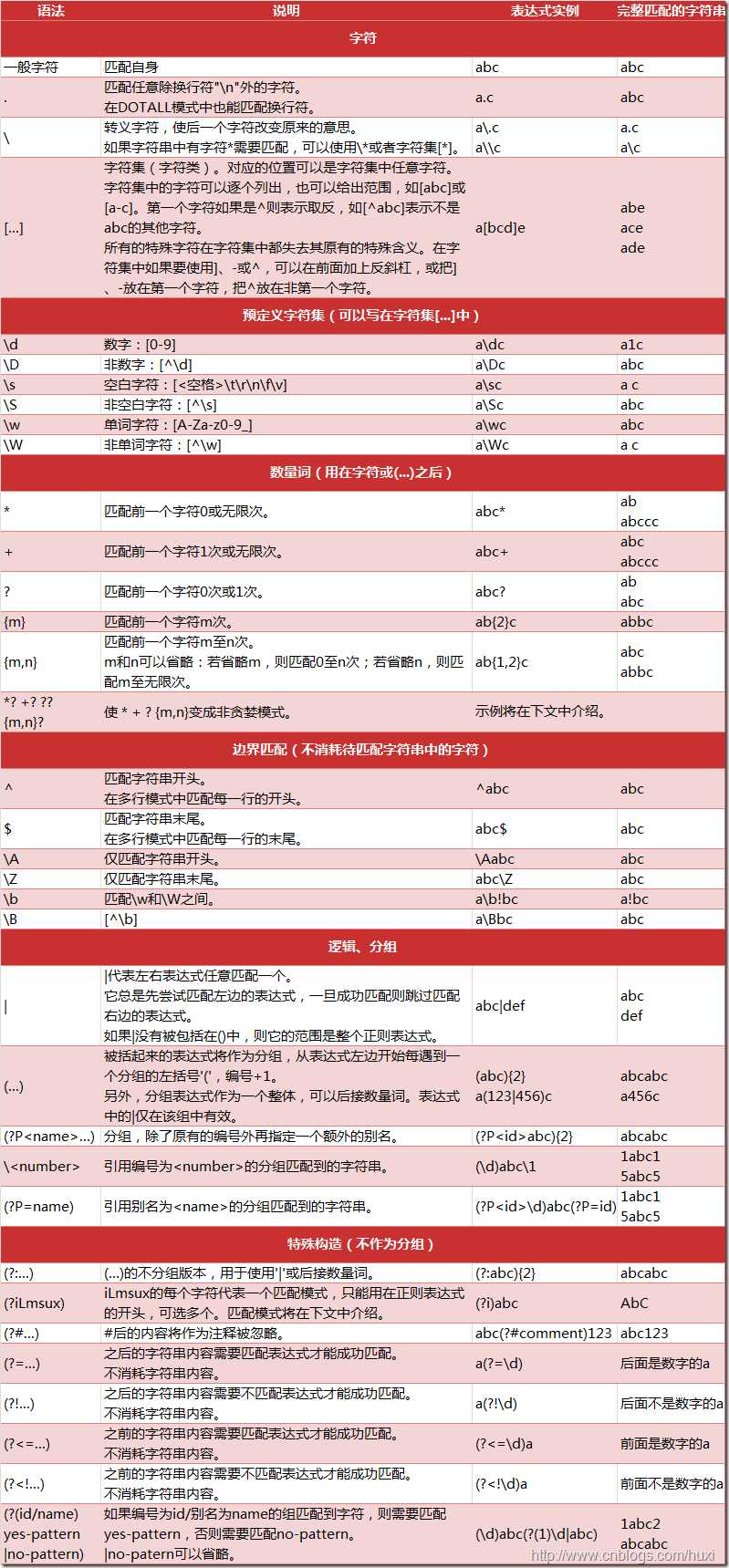特此声明:
http://blog.csdn.net/pleasecallmewhy
http://cuiqingcai.com/
正则表达式基础

re模块(Python通过re模块提供对正则表达式的支持)
主要用到的方法:
#返回pattern对象
1 re.compile(string[,flag]) 2 #以下为匹配所用函数 3 re.match(pattern, string[, flags]) 4 re.search(pattern, string[, flags]) 5 re.split(pattern, string[, maxsplit]) 6 re.findall(pattern, string[, flags]) 7 re.finditer(pattern, string[, flags]) 8 re.sub(pattern, repl, string[, count]) 9 re.subn(pattern, repl, string[, count])
re使用步骤:
Step1:将正则表达式的字符串形式编译为Pattern实例。
Step2:使用Pattern实例处理文本并获得匹配结果(Match实例)。
Step3:使用Match实例获得信息,进行其他的操作。
1 import re #导入模块 2 pattern=re.compile(r‘hello‘)#将正则表达式编译成Pattern对象,注意hello前面的r的意思是“原生字符串”,原原本本的输出 3 match1=pattern.match(‘hello world‘)#使用Pattern对象来进行进一步的匹配文本,获得匹配结果 4 match2=pattern.match(‘helloo world‘) 5 match3=pattern.match(‘helllo world‘) 6 if match1: #如果匹配成功 7 print (match1.group()) # 使用Match获得分组信息 8 else: 9 print(‘not match1‘) # 10 if match2: 11 print(match2.group()) 12 else: 13 print(‘not match2‘) 14 if match3: 15 print(match3.group()) 16 else: 17 print(‘no match3‘)
下面来具体看看代码中的关键方法。
★ re.compile(strPattern[, flag]):
这个方法是Pattern类的工厂方法,用于将字符串形式的正则表达式编译为Pattern对象。
第二个参数flag是匹配模式,取值可以使用按位或运算符‘|‘表示同时生效,比如re.I | re.M。
另外,你也可以在regex字符串中指定模式,
比如re.compile(‘pattern‘, re.I | re.M)与re.compile(‘(?im)pattern‘)是等价的。
可选值有:
1 import re 2 a=re.compile(r"""\d+ 3 \. 4 \d*""",re.X) 5 b=re.compile(r‘\d+\.\d*‘) 6 match1=a.match(‘3.1415‘) 7 match2=a.match(‘33‘) 8 match3=b.match(‘3.1415‘) 9 match4=b.match(‘33‘) 10 if match1: 11 print(match1.group()) 12 else: 13 print(‘match1 is not a digital‘) 14 if match2: 15 print(match2.group()) 16 else: 17 print(‘match2 is not a digital‘) 18 if match3: 19 print(match3.group()) 20 else: 21 print(‘match3 is not a digital‘) 22 if match4: 23 print(match4.group())
原文:http://www.cnblogs.com/wujiadong2014/p/4928763.html